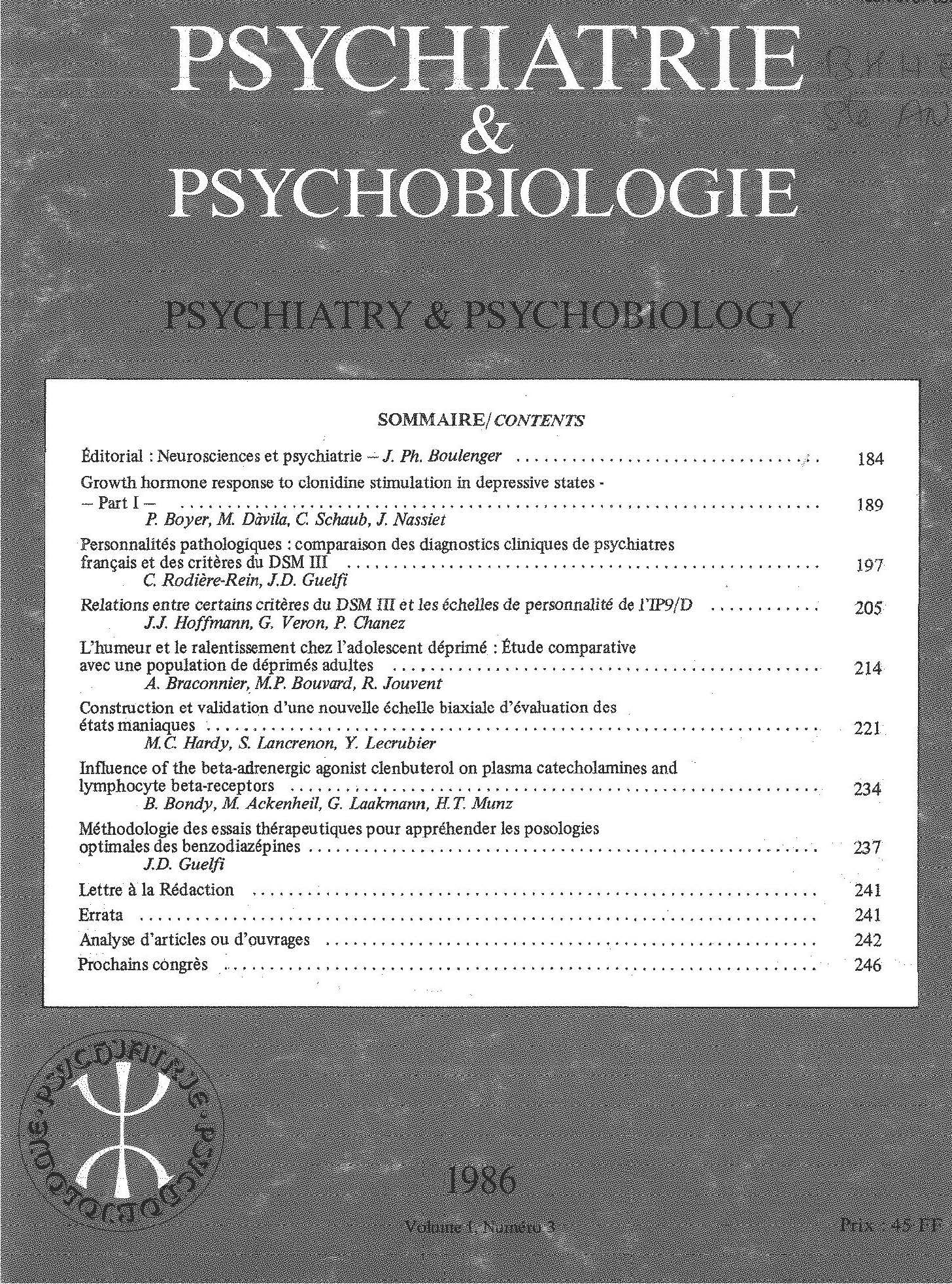Article contents
Les rythmes circadiens dans la dépression
Published online by Cambridge University Press: 28 April 2020
Résumé
Les auteurs font une présentation générale des connaissances sur les troubles des rythmes circadiens dans la dépression et en proposent une synthèse. Ils soulignent d’abord les difficultés méthodologiques de ces éludes: difficultés liées à la nécessité du recueil d’un nombre considérable de données et difficultés pour analyser ces données et vérifier que les différences observées correspondent bien é des cycles circadiens.
Ils envisagent ensuite les troubles des phases, des taux moyens et des amplitudes. Les phases des cycles circadiens ont été beaucoup étudiées surtout après la proposition du concept d’avance de phase comme caractéristique propre de la dépression, qui avait été faite par Wehr en 1980. II semble actuellement que, plus qu’une avance de phase, ce qui caractérise la dépression c’est une désorganisation des phases. Les taux moyens sont souvent modifiés. Parlois diminués (mélatonine), parfois augmentés (cortisol). Les amplitudes des oscillations sont le plus souvent diminuées. Cette constatation, plus récente que les précédentes, semble être de première importance. Moins un rythme est ample, moins il est stable. Il est possible que désynchronisation et diminution d’amplitude soient deux manifestations d’une «faiblesse» des rythmes circadiens qui serait leur caractère principal dans la dépression.
Ces anomalies n’existent pas que dans la dépression, mais c’est dans son cas qu’elles sont le plus manifestes. En général, elles disparaissent en période de rémission clinique. Pour expliquer ces perturbations, il semble qu’il faille envisager à la fois un trouble de la sensibilité aux synchroniseurs externes et un trouble des systèmes de contrôle interne des rythmes.
Summary
The authors give a general presentation of the knowledge about circadian rhythm troubles in depression and propose a synthesis. First they emphasize the methodological difficulties of these studies. The difficulties come from the necessity of collecting a considerable quantity of data. There are also difficulties to analyse these data and verify that the founded differencies concern really the circadian rhythms.
Then, they study the troubles of the phases, the means, the amplitudes of the cycles. The phases were studied essentially from the concept of “phase advance” proposed by Wehr in 1980. It appears now that the depression is caracterized more by a “phase disorganisation” than by a “phase advance”. The mean rates are often abnormal sometimes lowered (melatonin), sometimes increased (cortisol). The amplitudes are mostly lowered. This finding more recent than the others, appears to be of major importance. Less a rhythm is ample, less it is stable. It seems that desynchronization and amplitude reduction are two manifestations of a “weakness” of the circadian rhythms. It is perhaps the major curacteristic of the depression.
These abnormulities are not exclusively seen in depression but are the most evident there. Generally they disappear with recovery. To explain these troubles, it seems necessary to consider at the same time a sensibility deficit to the externar synchronizers and a failure of the internat control of the rhythms.
Keywords
- Type
- Research Article
- Information
- Copyright
- Copyright © European Psychiatric Association 1998
References
Références
- 2
- Cited by



Comments
No Comments have been published for this article.